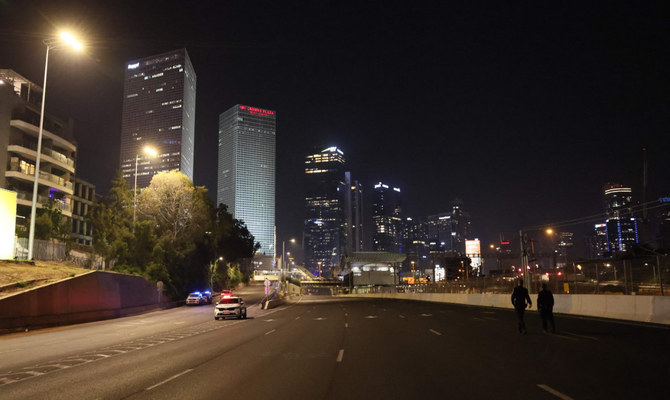RAMALLAH: Israeli police are being sharply criticized after failing to control crime in Arab communities.
Crime in Israel’s Arab community of 1.7 million is witnessing an unprecedented increase, which has raised concern among Arabs about the ability and the intention of the Israeli police to control it.
Fifty-one Arabs were killed since the beginning of the year by organized crime gangs in Galilee, the Triangle, and Negev.
Members of the Arab community and police continue to trade blame over who is responsible for the developments, with the former blaming Israeli police for inefficiency in fighting crime and the latter blaming the community for a lack of cooperation by not providing information on the identity of crime suspects.
In his election campaign, National Security Minister Itamar Ben-Gvir promised to strengthen police and eliminate violence in Arab society, but with crime on the rise, senior police officers say it is time for the minister, as well as Police Commissioner Kobi Shabtai, to take charge and create a body to deal with the issue.
In 2021, about 33 percent of homicide cases were solved, while in 2022, only 21 percent were solved. This year, out of 48 homicide cases, only three were solved.
By comparison, in the Jewish community in 2020, 68 percent of cases were solved. The year 2021 saw that figure rise to 78 percent, and in 2022, 70 percent of murder cases in the Jewish community had been solved.
According to police data, 518 people were killed in the Arab community from 2018 until the beginning of this year — an average of 104 homicides each year.
Mohammed Darawsheh, strategic director of the Givat Habiba Institute and an expert on Arab society in Israel, told Arab News that the rate of deaths among Arabs — who make up 17 percent of the population of Israel — is twice as high as that of last year.
Police are lenient with criminal gangs, which created an environment in which they could flourish, Darawsheh said.
“The police come to suppress demonstrations in Arab society and not to provide services to protect citizens from crime, so crime grows and expands,” he explained.
“I would prefer that my son stay up in a coffee shop in a Jewish town rather than stay up in a coffee shop in an Arab town, where he could be shot and accidentally injured, as happens a lot.”
Darawsheh added that he cannot even open a business, as gang members would come and demand that he pay them a share of his profits.
He said 90 percent of murder cases are related to organized crime.
Meanwhile, Arab experts in Israel consider organized crime to be the biggest challenge facing their community.
Some businesspersons have been compelled to live in mixed Israeli-Arab cities away from the crime-plagued environment of their cities and towns.
Jall Banna, a political analyst from Kufur Yassif in Galilee, told Arab News: “If an Arab uses his weapon against a Jew or the state, he will be tried in a security case and imprisoned for 20 years. If an Arab uses his weapon against an Arab, he will not be detained or imprisoned for more than a few days or weeks; this is the limit.
“I believe that the police, even if they have the tools, do not have the desire to eradicate crime.”
Some Israeli security experts suggest that the Shin Bet should be involved in dealing with the phenomenon of organized crime, given the technology, information and experience at its disposal.
However, this proposal has been met with reservation from some leaders of the Arab community in Israel, who claim that police are indifferent to crimes that result in Arab victims and only take action when there is a threat against the Jewish community.
Police, for their part, claim that Arabs do not provide the information necessary to identify members of their community who might be involved in committing the crimes.
As organized crime shifts to Israeli-Arab mixed cities, the matter has become a strategic threat to the Jewish community.
Banna told Arab News that members of Israel’s Arab community believe that there are “hidden forces” behind the crime.
“Arab society is a kind of fertile ground for crime, especially organized crime,” Banna said.
















